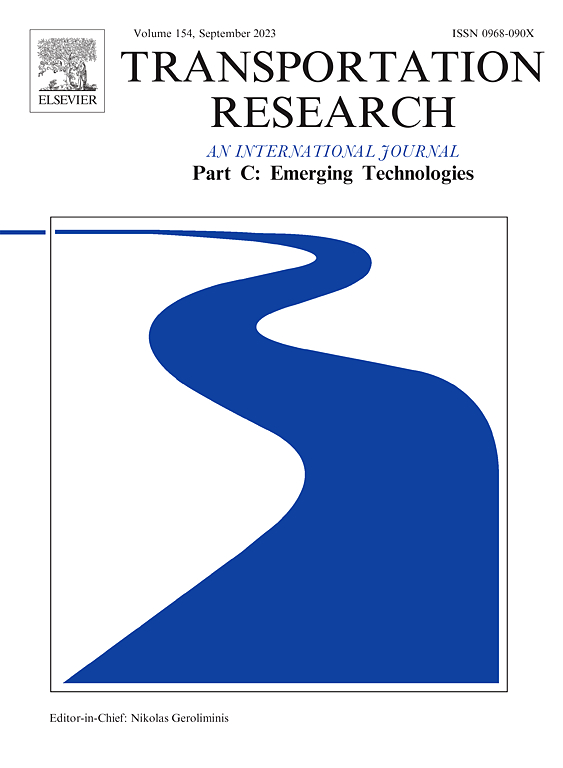Toward low-burden travel survey: Identifying travel modes from GPS tracks fusing individual histories and enumerated annotations
IF 7.6
1区 工程技术
Q1 TRANSPORTATION SCIENCE & TECHNOLOGY
Transportation Research Part C-Emerging Technologies
Pub Date : 2025-02-01
DOI:10.1016/j.trc.2024.104975
引用次数: 0
Abstract
GPS-based travel surveys, coupled with automatic Travel Mode Identification (TMI) techniques, have emerged as effective tools for capturing travel details while reducing participant annotation burdens. However, existing models typically identify travel modes on a per-trip basis without considering individual travel regularity. More importantly, incorrect identification increases modification burdens, an issue that has not been adequately assessed or addressed. We propose a novel TMI scheme for travel surveys: participants enumerate their used travel modes before TMI, and the History and Annotation Informed Network (HAIN) model integrates individual historical travel information and enumerated annotations to infer the current travel mode chain, thereby improving accuracy and reducing the need for modifications. The designed history and annotation fusion modules in HAIN are plug-and-play and can operate separately. Additionally, we introduce the “number of edits” to quantitatively assess user annotation burden. We divide data by travelers and conduct three-fold cross-validation to approximate real-world scenarios. Results show that the accuracy of the state-of-the-art model is 83.14%; it reaches 86.3% when identifying trips sequentially with previously inferred histories; using corrected histories improves accuracy to 88.26%; and incorporating enumerated annotations raises it to 96.03%. Correspondingly, the annotation burdens are reduced to 43.8%, 39.9%, 36.6%, and 24.3% of what they would be without TMI. The two fusion modules also enhance the performance of baseline models. The history fusion improves model robustness when incorrect annotations occur. Comprehensive experiments indicate that the proposed scheme significantly enhances data collection efficiency and improves user experience.
求助全文
约1分钟内获得全文
求助全文
来源期刊
CiteScore
15.80
自引率
12.00%
发文量
332
审稿时长
64 days
期刊介绍:
Transportation Research: Part C (TR_C) is dedicated to showcasing high-quality, scholarly research that delves into the development, applications, and implications of transportation systems and emerging technologies. Our focus lies not solely on individual technologies, but rather on their broader implications for the planning, design, operation, control, maintenance, and rehabilitation of transportation systems, services, and components. In essence, the intellectual core of the journal revolves around the transportation aspect rather than the technology itself. We actively encourage the integration of quantitative methods from diverse fields such as operations research, control systems, complex networks, computer science, and artificial intelligence. Join us in exploring the intersection of transportation systems and emerging technologies to drive innovation and progress in the field.

 求助内容:
求助内容: 应助结果提醒方式:
应助结果提醒方式:


